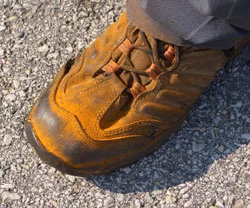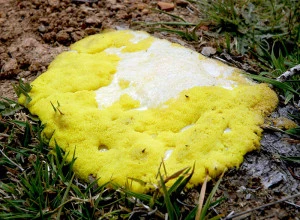
Our Blog
Use our blog as a resource of information pertaining to lawn and landscape maintenance information and services for your properties.

Use our blog as a resource of information pertaining to lawn and landscape maintenance information and services for your properties.
 Not surprising…our weather conditions have been prime for rust fungus to form on lawns this year. Most commonly, rust is noticed during periods of slow growth. Our lawns typically go dormant during the summer months due to the lack of rain and also heat. This summer is the first in a very long time that we have had regular rain fall through the entire summer months and also cool temperatures. For the most part, non-irrigated lawns have kept their lovely green color all season. Though, the rate of growth has slowed down.
Not surprising…our weather conditions have been prime for rust fungus to form on lawns this year. Most commonly, rust is noticed during periods of slow growth. Our lawns typically go dormant during the summer months due to the lack of rain and also heat. This summer is the first in a very long time that we have had regular rain fall through the entire summer months and also cool temperatures. For the most part, non-irrigated lawns have kept their lovely green color all season. Though, the rate of growth has slowed down.
Rust is noticed during periods of slow growth because the rust is not being physically removed by regular mowing at a fast rate as it would be if the lawn were growing rapidly. Therefore, the rust has an opportunity to proliferate on the slower growing blade of grass.
Once conditions are right for the grass to begin growing more rapidly, the rust ‘problem’ will mitigate itself without any additional inputs. Conditions can be related to weather or nutrients.
Some may advise that an application of fertilizer will take care of the rust problem. And while it is true that applying fertilizer will probably increase the rate of growth, applying fertilizer may not be the appropriate thing to do. If the soil is holding enough nutrients already, then these additional nutrients may just runoff and pollute our environment. Also, given that it is the middle of summer and weather...
Disease seen in some lawns
Earlier this week, we were called to a home in Pewaukee because of some suspicious looking dead patches. At first, we thought it was an overspray of roundup. Once we saw the area in person we soon realized that it was a fungal disease.
How can we tell the difference? With a fungal disease there are various distinct markings on the leaf blades and also if inspected early in the day we can often see mycelium (fuzzy stuff). Each sort of plant disease has very distinct characteristics in how they look either to the naked eye, or under a microscope.
What should be done? On a residential lawn, usually nothing. As soon as conditions change, the disease progression will stop. The damage is often very minor and the lawn will recover just fine on its own. One of the reasons why the damage is minor is because your lawn is created from several types of grass. Often a disease only attacks one type and the others are unscathed.
In other scenarios, such as a golf course, where there are monocultures of grasses planted, pristine conditions are demanded and because of the way the turf is maintained overall, the application of a fungicide may be necessary to halt its progression.
For a home lawn situation however, it is not prudent to apply fungicides for a problem that is really quite temporary, likely to pass with a change in weather, and not cause significant damage. If there is...
“Dog Vomit Fungus”-Slime Mold
 In spring, when you have cleaned the yard of all its winter debris and laid down new hardwood mulch on all of your beds. Some time has passed and as you walk around enjoying your season-ready yard, you notice something sitting on top of your mulch! It is not very big, but it is very ugly, and quite frankly, it looks like your dog has puked up something that didn’t quite agree with him. What you are looking at is called, in gardening circles, Dog Vomit Fungus (slime mold). No really, that’s what it is called and it is more common that you’d think! Typically, spring weather conditions are perfect for this nasty looking fungus to appear in your mulched landscape beds.
In spring, when you have cleaned the yard of all its winter debris and laid down new hardwood mulch on all of your beds. Some time has passed and as you walk around enjoying your season-ready yard, you notice something sitting on top of your mulch! It is not very big, but it is very ugly, and quite frankly, it looks like your dog has puked up something that didn’t quite agree with him. What you are looking at is called, in gardening circles, Dog Vomit Fungus (slime mold). No really, that’s what it is called and it is more common that you’d think! Typically, spring weather conditions are perfect for this nasty looking fungus to appear in your mulched landscape beds.
 Why is it showing up in JULY? Lately, the weather has been very similar to our spring time conditions, cool and damp.
Why is it showing up in JULY? Lately, the weather has been very similar to our spring time conditions, cool and damp.
We have been getting calls reporting a strange slimy mess in landscape beds- almost like someone threw up in their gardens!!! It is a type of mushroom? Is it going to harm my shrubs or other landscape plant material?
Let me ease your concerns…
This isn’t a mushroom at all. It is a mold- a slime mold! It is actually more closely related to a single-celled organism. Slime mold has 2 life stages; First, “plasmodium” stage- it is just like a huge amoeba that creeps and moves like a blob over dead wood (including mulch) and other materials, engulfing,...
Just complete the form below to get a pricing quote.
